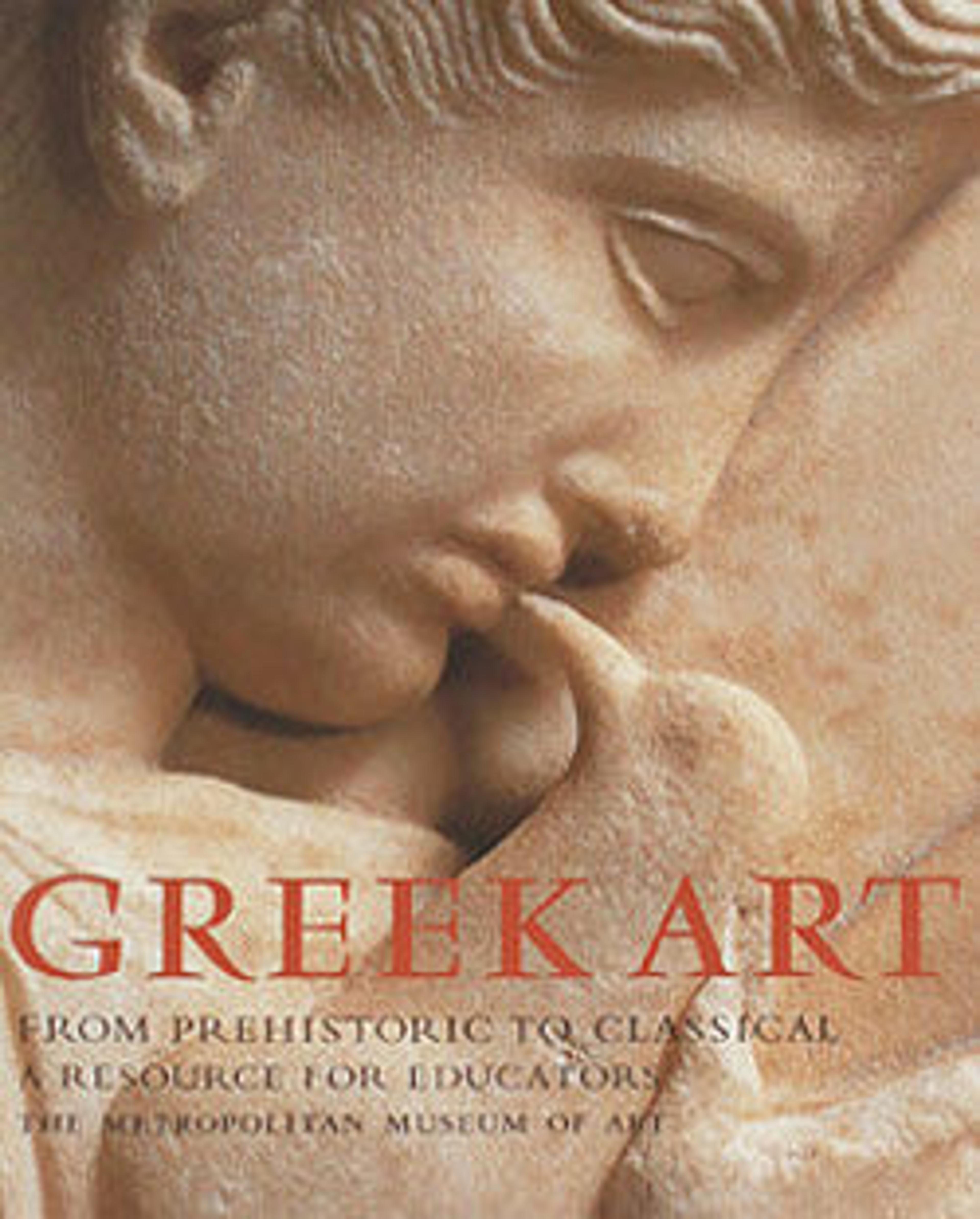Terracotta hydria (water jar)
On the body, Herakles wrestling Triton
On the shoulder, Achilles pursuing Troilos
Herakles wrestling Triton is a recurrent subject, especially on hydriai and neck-amphorae of the second half of the sixth century B.C. No surviving ancient source spells out the story. Its popularity on hydriai is due partly to Triton's being a marine creature and partly to interest in the exploits of Herakles. The pursuit of Troilos is pertinent because, as he fled, his sister Polyxena dropped the hydria in which she was carrying water from the fountain house.
On the shoulder, Achilles pursuing Troilos
Herakles wrestling Triton is a recurrent subject, especially on hydriai and neck-amphorae of the second half of the sixth century B.C. No surviving ancient source spells out the story. Its popularity on hydriai is due partly to Triton's being a marine creature and partly to interest in the exploits of Herakles. The pursuit of Troilos is pertinent because, as he fled, his sister Polyxena dropped the hydria in which she was carrying water from the fountain house.
Artwork Details
- Title: Terracotta hydria (water jar)
- Period: Archaic
- Date: ca. 560–550 BCE
- Culture: Greek, Attic
- Medium: Terracotta; black-figure
- Dimensions: H. 13 1/8 in. (33.3 cm)
- Classification: Vases
- Credit Line: Rogers Fund, 1906
- Object Number: 06.1021.48
- Curatorial Department: Greek and Roman Art
More Artwork
Research Resources
The Met provides unparalleled resources for research and welcomes an international community of students and scholars. The Met's Open Access API is where creators and researchers can connect to the The Met collection. Open Access data and public domain images are available for unrestricted commercial and noncommercial use without permission or fee.
To request images under copyright and other restrictions, please use this Image Request form.
Feedback
We continue to research and examine historical and cultural context for objects in The Met collection. If you have comments or questions about this object record, please contact us using the form below. The Museum looks forward to receiving your comments.
